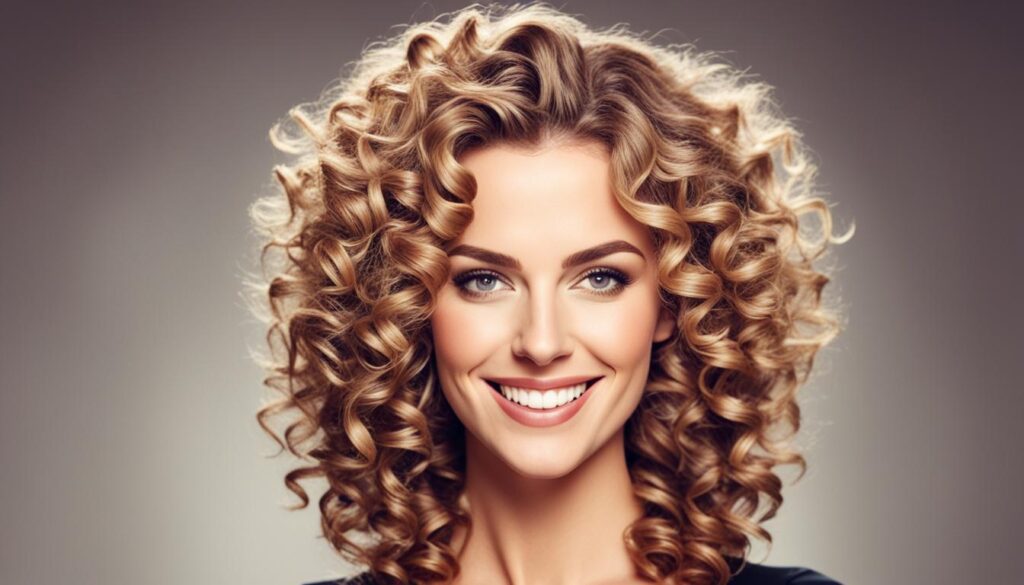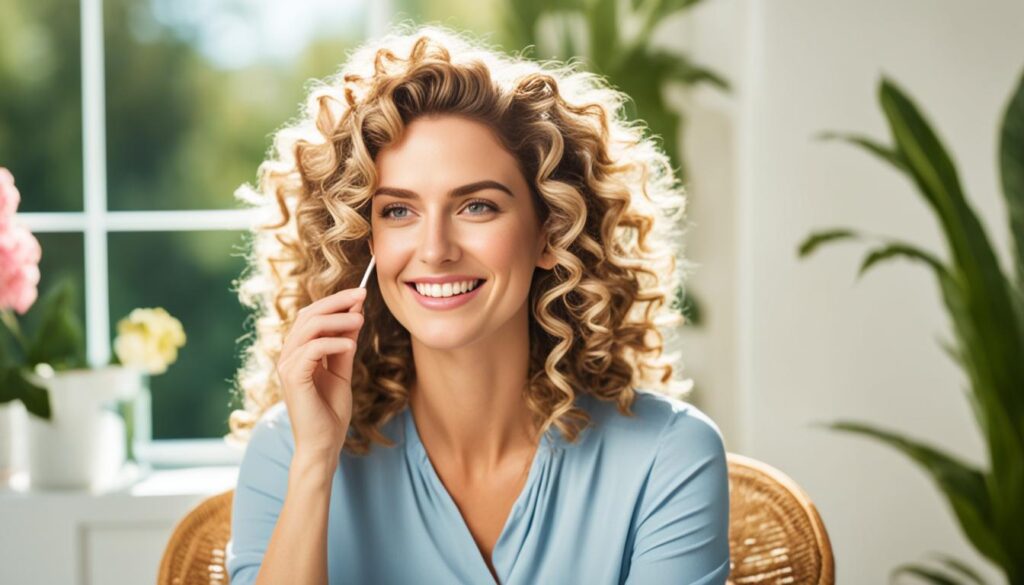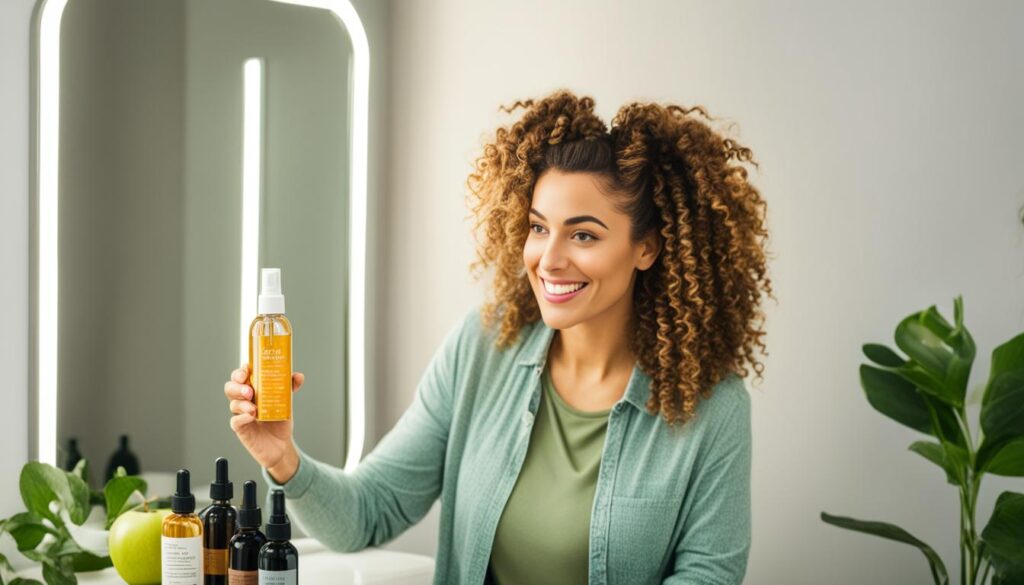
When it comes to hairstyling, braids have been long regarded as a versatile and trendy option. But did you know that braiding can also transform your hair texture? Many people wonder: do braids make your hair curly? In this article, we will explore the connection between braids and curls, uncovering the secrets behind achieving curly hair through braiding techniques. Whether you have natural hair or are looking for a heat-free way to create gorgeous curls, braiding might hold the key to the hairstyle of your dreams. Let’s dive in and discover the curly potential of braids!
Key Takeaways:
- Braiding can potentially result in curly hair.
- Specific steps, such as washing and drying the hair, applying styling products, and braiding when damp or slightly dry, are essential for achieving curly hair through braiding.
- Braiding can be done in different ways, including side braids, traditional braids, and even braiding with straws.
- The length and tightness of the braid can affect the resulting curls.
- It is important to protect and maintain the curls by using appropriate hair ties, scrunchies, and hair products.
How to Braid Your Hair for Curly Results
To achieve curly hair through braiding, it is recommended to start with clean, slightly damp hair. The hair should be brushed and free of tangles before applying any styling products. For those with thick or coarse hair, using a hair oil can help nourish and moisturize the strands. If you have wavy or straight hair, using a setting lotion or mousse can provide hold and definition to the curls.
Once the hair is prepped, it’s time to start braiding. It is best to braid the hair when it is about 80% dry, as this allows the hair to set and hold the curls better. You can either divide your hair into sections or create a deep side part for a more specific look. It is up to personal preference and the desired outcome.
To secure the braids, it is recommended to use fabric or thread-wrapped hair ties. These types of hair ties are gentle on the hair and help prevent breakage. After braiding, you can leave the braids in overnight or for at least 6-8 hours to allow the curls to form and set.
In the morning, carefully undo the braids to reveal beautifully curled hair. To enhance and hold the curls, you can apply a curling cream or hairspray. This helps to define the curls and keep them in place throughout the day.
Here’s a step-by-step guide on how to braid your hair for curly results:
- Start with clean, slightly damp hair.
- Brush your hair to remove any tangles.
- Apply a hair oil, setting lotion, or mousse depending on your hair type.
- Divide your hair into sections or create a deep side part.
- Braid the hair, making sure to secure the braids with fabric or thread-wrapped hair ties.
- Leave the braids in overnight or for at least 6-8 hours.
- In the morning, gently undo the braids to reveal curly hair.
- Apply a curling cream or hairspray to enhance and hold the curls.
With these braiding techniques, you can achieve natural-looking curls without the use of heat. Experiment with different braiding styles and products to find the best method that works for your hair type and desired curl pattern.
| Braid Hair for Curly Results | Benefits |
|---|---|
| Natural curls without using heat | Prevents hair damage from heat styling |
| Versatile styling options | Allows for a variety of curly hairstyles |
| No need for expensive tools | Cost-effective and easy to do at home |
| Protects the hair | Reduces breakage and promotes healthy hair growth |
Using Curlers for Heat-Free Curls
Curlers, also known as hair rollers, provide an alternative method for achieving beautiful curls without the use of heat. Whether you have damp or dry hair, curlers can help you create natural and long-lasting curls. These versatile styling tools come in various materials, such as foam or plastic, and different sizes that offer different curling effects on your hair.
To use curlers effectively, start by preparing your hair. Ensure it is clean and dry, then choose the type and size of curlers based on your desired outcome. Smaller curlers are ideal for tighter curls, while larger curlers create looser waves.
Next, divide your hair into sections and begin wrapping each section around a curler, starting from the ends and working your way up to the roots. Secure the curlers in place using pins or clips.
| Benefits of Using Curlers | Tips for Using Curlers |
|---|---|
|
|
In the morning, carefully remove the curlers, allowing the curls to naturally fall into place. You can enhance the curls further by gently scrunching your hair or using your fingers to separate and define each curl. To maintain the perfect curls all day long, use a setting or holding spray to keep them in place.
With curlers, you can achieve beautiful, heat-free curls without compromising the health and integrity of your hair. Experiment with different curler sizes and techniques to discover the perfect style that suits your personality and preferences.

Braiding for Natural Curls
Braiding the hair before bed can be an effective way to achieve natural curls. By following a simple nighttime routine, you can wake up to beautifully textured hair without the need for heat styling. To enhance the natural curl pattern, start by wetting your hair and using curl-enhancing shampoo and conditioner. This will help define and prepare your hair for the braiding process.
When your hair is damp, decide whether you prefer a simple braid or a French braid. This will depend on your personal preference and the desired outcome. For tighter curls, opt for smaller braids, while larger braids will create looser waves.
Once you have chosen your braiding style, divide your hair into sections and begin braiding. Make sure to secure each braid with a hair tie or clip. Leave the braids in overnight to allow them to set and work their magic.
In the morning, gently undo the braids to reveal your beautifully curled hair. If you desire more volume, lightly tease your roots or use a wide-toothed comb to separate and fluff the curls. To maintain the curls and prevent frizz throughout the day, apply a small amount of hair mousse or hairspray.
Remember, a nighttime routine that includes braiding is a heat-free way to achieve natural curls. This not only helps protect your hair from damage but also creates a versatile and stunning look.

| Pros | Cons |
|---|---|
| Braiding is a heat-free method that helps prevent damage to the hair. | Braids may cause frizz or flyaways if not done properly. |
| Creates natural-looking curls that can be customized based on the size and tightness of the braids. | May require practice to achieve the desired curl pattern. |
| Allows for versatility in styling, from loose waves to tighter curls. | Braiding takes time and may not be suitable for those with a busy morning routine. |
| Minimizes the use of heat styling tools, reducing the risk of hair damage. | Results may vary depending on individual hair texture and type. |
Unusual Tricks for Curly Hair
When it comes to achieving curly hair, there are some unusual tricks that can help you achieve the desired look. These tricks offer alternative methods to create curls without relying heavily on heat styling. Whether you’re looking for small, tight curls or soft, bouncy waves, these unique techniques are worth a try.
Using Plastic Straws to Curl Hair


One of the unusual tricks involves using plastic straws to curl your hair. This technique works best on damp hair. Start by dividing your hair into sections and wrapping each section around a straw. Secure the wrapped hair with bobby pins, allowing the curls to set for a few hours or overnight. Once you remove the straws, voila! You’ll reveal small, tight curls that add a touch of uniqueness to your hairstyle.
It’s important to note that you’ll need to use the right hair products to maintain and hold the curls in place. Consider using a hairspray with a strong hold and an anti-frizz serum to keep your curls intact throughout the day.
Using a Flat Iron to Curl Hair
Another unusual trick is curling your hair with a flat iron. This technique requires some practice, but with guidance from tutorial videos, you can master it. Start by sectioning your dry hair and applying a heat protectant spray to minimize damage. Take a small section of hair and clamp it between the flat iron plates. Then, twist the flat iron away from your face while gently gliding it down the hair shaft. Repeat this process for all sections, adjusting the size of the sections for different curl types.
Similar to other curling techniques, using the right hair products is key to maintaining the curls. Apply a hairspray with a flexible hold to keep your curls intact and give them a natural bounce. Don’t forget to run an anti-frizz serum through your hair to avoid any unwanted frizz or flyaways.
These unusual tricks for curly hair offer fun and creative ways to achieve the curly hairstyle you desire. Experiment with different techniques, products, and styles to find the perfect match for your hair type and preferences.
Using Heat for Curls
While heat should be used sparingly to prevent damage to the hair, it can be a quick and effective way to achieve curls. When using heated styling tools, such as a curling iron or curling wand, it is important to protect the hair by using a heat protectant spray. The size of the curling iron rod can be adjusted to achieve different types of curls, from tight curls to loose waves. Sections of dry hair are wrapped around the rod and held for a few seconds before being released. The curls can be secured with hairspray for long-lasting hold.
| Curling Iron Size | Curl Type |
|---|---|
| Narrow (3/4 inch) | Tight curls |
| Medium (1 inch) | Bouncy waves |
| Wide (1.5 inches) | Loose waves |
When using a curling iron, it is important to start with dry hair to avoid any potential damage from excess moisture. Divide the hair into manageable sections and wrap each section around the curling iron, holding it in place for a few seconds. Be sure to curl away from the face for a more natural look. Once all the sections are curled, run your fingers through the hair to loosen the curls and create a more relaxed style. Finish with a light mist of hairspray to keep the curls in place throughout the day.
Product Recommendations for Curly Hair
When it comes to styling and maintaining curly hair, using the right products is crucial for achieving the best results. Curly hair requires special care and attention, as it can be prone to frizz and dryness. By incorporating curl-enhancing shampoos, conditioners, and styling products into your hair care routine, you can enhance your natural curls and keep them looking smooth and defined.
Recommended Products for Curly Hair
| Product | Description |
|---|---|
| Shea Moisture Coconut & Hibiscus Curl & Shine Shampoo | A sulfate-free shampoo that cleanses and hydrates curly hair, leaving it soft and manageable. This shampoo contains natural ingredients like coconut oil and silk protein to enhance curls and reduce frizz. |
| Carol’s Daughter Almond Milk Ultra-Nourishing Hair Mask | A deep conditioning hair mask that replenishes moisture and strengthens curly hair. It contains almond oil and shea butter to nourish and repair damaged strands, leaving hair smooth and hydrated. |
| DevaCurl Light Defining Gel | A lightweight gel that provides hold and definition to curls without weighing them down. It helps to tame frizz and enhance curl formation, leaving hair bouncy and shiny. |
| Ouidad Climate Control Heat & Humidity Gel | A humidity-resistant gel that provides long-lasting hold and frizz control. This gel is ideal for humid climates, as it helps to seal in moisture and protect curls from humidity-induced frizz. |
| Moroccanoil Curl Defining Cream | A luxurious cream that moisturizes and enhances the natural curl pattern. It helps to define curls, reduce frizz, and add shine, making hair more manageable and vibrant. |
Remember to use a heat protectant spray when using heated styling tools to minimize damage to your hair. Additionally, incorporating a leave-in conditioner or hair oil into your hair care routine can provide extra moisture and nourishment for your curls. Don’t be afraid to experiment with different products to find the ones that work best for your unique curl type and texture.
By using high-quality products specifically designed for curly hair, you can achieve beautiful, healthy curls that are full of life and vitality.

Conclusion
Braiding is a versatile hairstyling technique that allows individuals to achieve beautiful curls without the need for heat. By following specific steps such as washing and drying the hair, applying styling products, and braiding the hair when it is slightly damp or dry, a variety of curly hairstyles can be achieved. Whether you desire loose waves or tight curls, braiding offers a heat-free option to add texture and dimension to your hair.
Experimenting with different braiding techniques and products is essential to finding the method that works best for your desired curls. From traditional braids to French braids, there are various styles to choose from. Additionally, using the right hair ties, scrunchies, and products like curl enhancers, mousse, and hairspray can help maintain and define your curls throughout the day.
By incorporating braiding into your hairstyling routine, you can achieve the curly hairstyle you desire while minimizing heat damage to your hair. Embrace the natural beauty of your curls and explore the endless possibilities that braiding offers in creating unique and stunning hairstyles.






